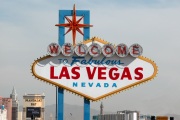 Our first podcast from NAB is up, covering the 2008 Autodesk User Group meeting on Sunday afternoon. The ep was recorded before the start of the show on Sunday evening, so we continued our annual tradition of covering the big meetup. Tomorrow’s podcast will be a roundtable with our industry friends and fxphd postgrads who make it to barcamp. Last year’s barcamp podcast was a blast, so be sure to check back on Tuesday for that or subscribe in iTunes so you get automatically notified. I’ve been twittering NAB (johnmontfx) as has Mike (mikeseymour) and Jeff (neonmarg).
Our first podcast from NAB is up, covering the 2008 Autodesk User Group meeting on Sunday afternoon. The ep was recorded before the start of the show on Sunday evening, so we continued our annual tradition of covering the big meetup. Tomorrow’s podcast will be a roundtable with our industry friends and fxphd postgrads who make it to barcamp. Last year’s barcamp podcast was a blast, so be sure to check back on Tuesday for that or subscribe in iTunes so you get automatically notified. I’ve been twittering NAB (johnmontfx) as has Mike (mikeseymour) and Jeff (neonmarg).
Big news at the user group meeting was the showing of Flame and Smoke 2009 for the first time publically. We talk about the release in the podcast, but don’t get through all the features so we’ll do so here. Smoke users were a happy bunch after the user group meeting, since they now have batch in smoke via what is called BatchFX (a much improved SegmentFX). Flame users have the same functionality, but since they already had batch — there was generally some disappointment in the lack of new features. Effectively, the reactions are reversed from the 2008 release where flame users seemed to get all the cool toys. Considering 2008 was released in September of last year, there were actually quite a few improvements in the software in a relatively short period of time. The engineering team and beta users had a very compressed schedule.
For a more complete listing on what’s new in flame and smoke, click through on the read more link…..
Flame and Smoke New Features in 2009
(items impacting only one app are noted)
Batch in Smoke: Yes, it is there, implemented as BatchFX.
Batch FX: A much improved SegmentFX functionality in the batch timeline. Layers in the timeline can be promoted to batch objects feeding an Action node. They maintain their priority, blend modes, and transparency. If they have soft effects applied to them, the soft effects may be converted to batch nodes.
You can select multiple layers in a timeline and convert them to a BatchFX — dropping you into a nested Batch setup. When you exit the BatchFX, you have a single layer containing the output in the original timeline. This output can contain a matte, allowing RGBA vertical compositing using BatchFX.
Full compatibility between Smoke and Flame (unsupported nodes in Smoke are grayed out, but may be opened)
Soft FX in Timeline (flame): Flame now has all the soft effects which were previously only available in Smoke.
New Batch Clip Timing View: A new horizontal view of batch clips stacked in layers, allowing one to visually offset timing of the various clips.
DVE RIP (smoke): Gone is the silly idea of calling DVE something different in Smoke…even though it was basically Action with certain features missing. The node is now called Action in both apps. There is still a difference between the smoke and flame Action nodes — such as the lack of Particles, Deform nodes, etc.
Add Trans Surface Mode:
MXF File Support: You can now import P2 files (and QuickTime) movies in the following formats: DV25, DV50, and DVCPro HD.
Soft Import of QuickTimes, Compressed Media: For supported codecs, you can now soft-import movies from standard file systems. This effectively means that there is support for compressed codecs within the flame/smoke apps if you have a fast enough array. This works for all codecs listed in the Export popup, except for RTJpeg. There is still no Animation RGBA support.
Improved FCP XML Support: With soft import of movies comes the ability to relink movie media from the filesystem, referencing the original files without importing.
QuickTime Profiles: You can save and load movie export presets.
Import/Export of MP3 and Broadcast WAV files.
Player is now tabbed to more easily switch between timeline and other modes.
AutoStabilize Node (flame): This node can use either 2D or 3D analysis of a scene to do stabilization. Learning the menus/functions takes a bit of time, but you can end up with some great results.
New Batch Nodes: A new Glow node and RGB Blur node are available. The blur node is really fast, supports OpenEXR 16bit files, and has Gaussian, Directional, and Radial blur options. Glow node is not available in Smoke.
Improvements to 3D Tracker (flame): The 3D tracker now shows tracking points as a 3D point cloud in all views, making it much easier to work with. It automatically creates a “3D Sync Camera” after tracking so you can adjust the camera and track on the fly.
Floating Point Support in Action: Media effects such as blur, crop are supported in 16-bit fp — and you can use for all Action objects such as Images, Textures, and Projectors. You can enable or disable color clamping in Action, allowing lights to have values to 11. OK…values over 100%. Operations such as colour correct, keying, and stabilizing do not support floating point.
Masks as Geometry: You can now import Gmasks and turn them into 3D objects in Action.
